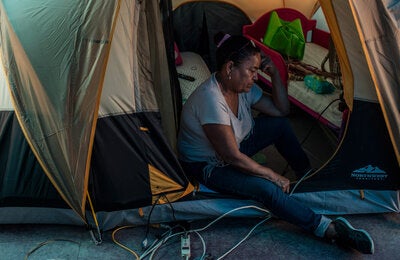Countries in the Region of the Americas have made major advances in reducing child mortality rates, but progress in terms of burden of disease and coverage of health interventions remains unevenly distributed. To end preventable child mortality, more must now be done to improve the monitoring of inequities, target vulnerable children, and incorporate gender and ethnicity approaches into child health policies and services.
Washington, DC, 26 September 2018 (PAHO/WHO) – Countries in the Region of the Americas have made major advances in reducing child mortality rates, but progress in terms of burden of disease and coverage of health interventions remains unevenly distributed. To end preventable child mortality, more must now be done to improve the monitoring of inequities, target vulnerable children, and incorporate gender and ethnicity approaches into child health policies and services.
These are the conclusions of the final report on the Strategy and Plan of Action for Integrated Child Health (2012-2017), submitted this week by the Pan American Health Organization (PAHO) to its member countries during the 56th Directing Council, which brings together all the Region’s health authorities. The Plan, adopted in 2012 to reduce child mortality and support countries to advance child health and well-being, proposed 5 strategic lines of actions on promoting an effective, multisectoral, life-course, and equity driven approach to child health.
Between 1990 and 2016, under-5 years old mortality fell by 68% in the region, from 44 deaths per 1,000 live births, to just 14. This decline primarily reflects decreases in diarrhea, pneumonia, undernutrition, and vaccine-preventable diseases. It is due to progress made in a variety of areas, including the creation of a strong policy environment to support child survival and development; the provision of technical tools and guidelines to support health care providers; improved data collection on coverage of interventions and under-5 mortality; increased access to community care; and established multisectoral mechanisms to address child health priorities.
Thanks to advances in these areas, countries now have the knowledge, technology, resources and experience to continue to accelerate progress and end preventable child mortality altogether. However, in order to achieve this, they must address the inequalities in the burden of disease and gaps in access to health services.
For example, while stunting as a measure of undernutrition decreased overall in the Region from 11% in 2000 to 6.9% in 2015, country-level measures varied from 46.5% in Guatemala to 1.8% in Chile. Similarly, the proportion of children under the age of 5 taken to a health facility for pneumonia in 2015, which varied from 68% among the richest quintile to 46% among the poorest, urging more targeted interventions.
The report recommends that strategic actions on child health must be expanded to include children 5 to 9 years old, and vulnerable groups such as children from indigenous, Afro-descendant and Roma communities, as well as those living with disabilities and other challenges. Measures to incorporate gender and ethnicity approaches into child health policies must also be prioritized in order to ensure that no child is left behind. Furthermore, there is need to improve the monitoring of inequalities and generate more disaggregated data at national and subnational levels.
Other highlights of the PAHO report:
- Child survival during the neonatal period remains a matter for urgent action in the Region, as neonatal mortality accounts for 53% of all deaths of children under the age of 5.
- At least 40% of young children have experienced some form of violent discipline, but only 10 countries have outlawed all forms of corporal punishment at home and in schools and child care centers
- Policies or strategies on child health have now been implemented in 23 countries. Multisectoral policies or strategies on early childhood development have been implemented in 19, and policies or strategies on food security and nutrition have been implemented in 18 countries.
- The number of children living with HIV in Latin America and the Caribbean is decreasing, but countries must ensure treatment retention and adherence to achieve successful virological outcomes
- 15 countries have community health workers or home visitors as part of primary care services in order to improve integrated child health and the well-being of children.
Links
— Strategy and Plan of Action for Integrated Child Health: Final Report
— 56th Directing Council documents
— 56th Directing Council:



